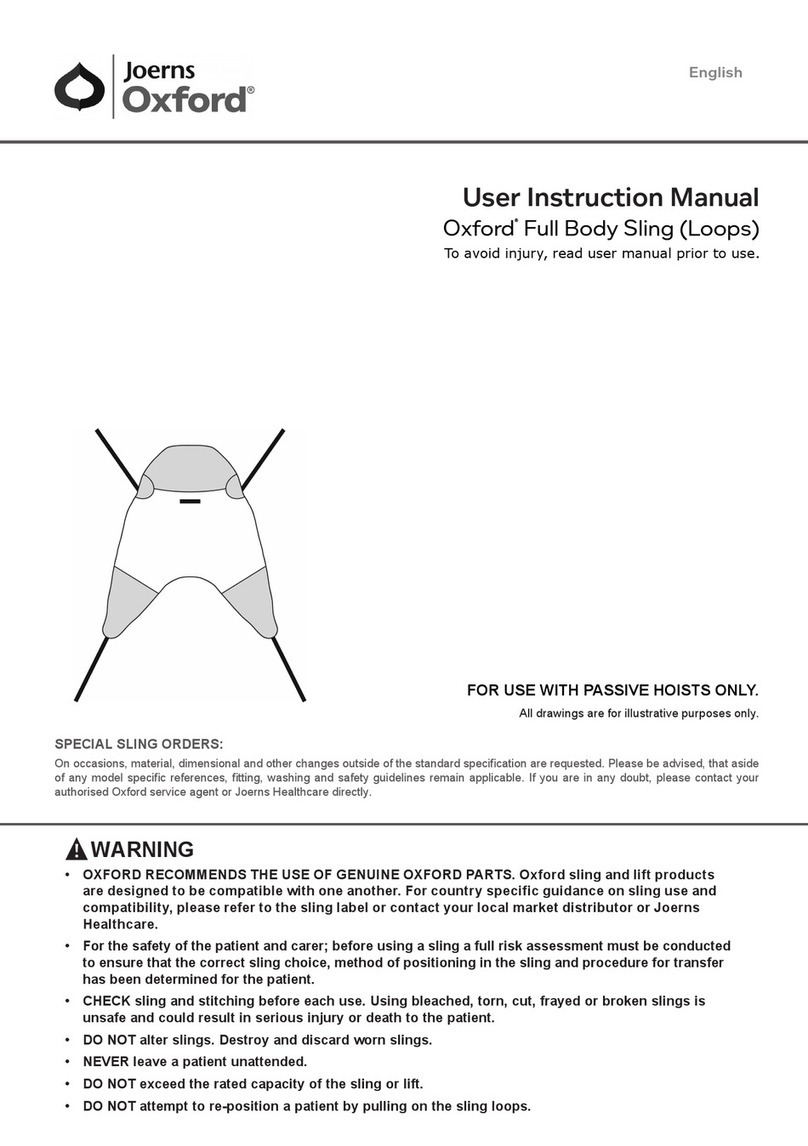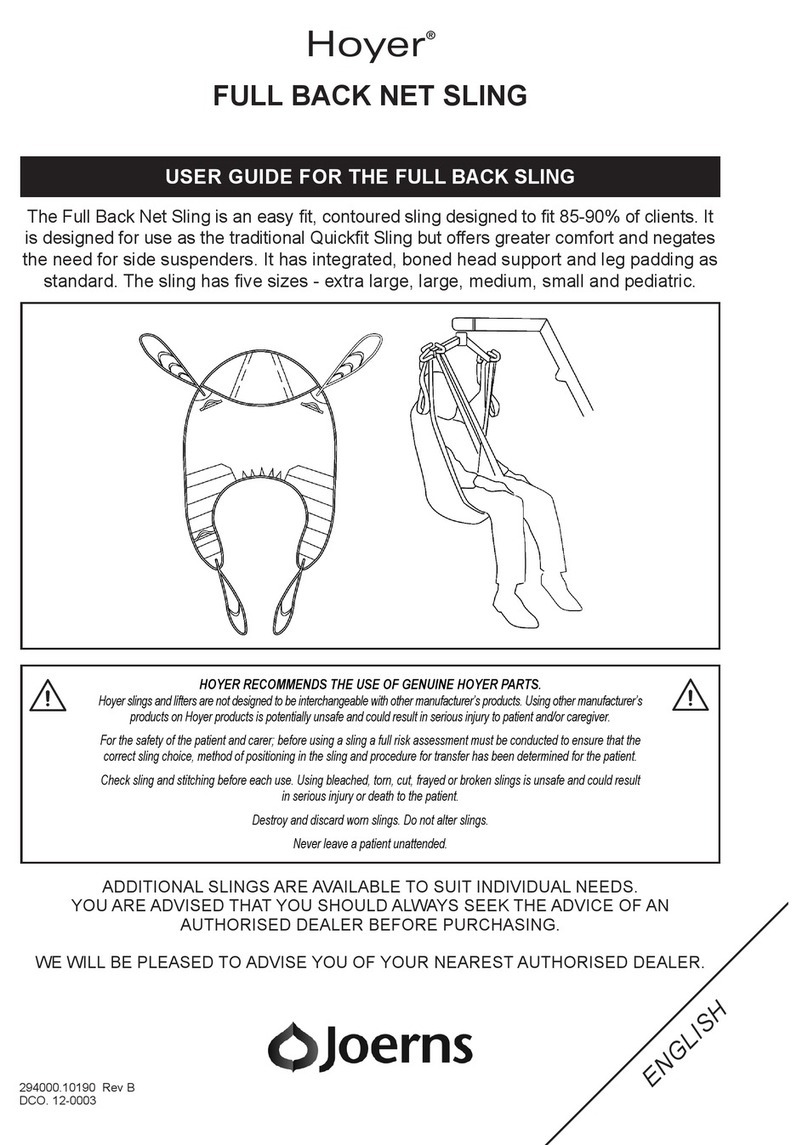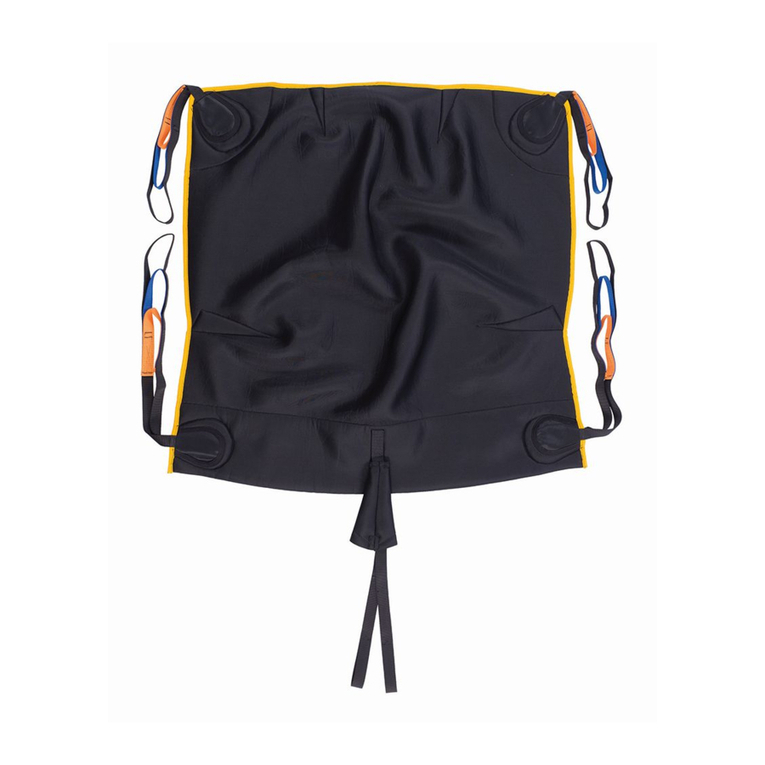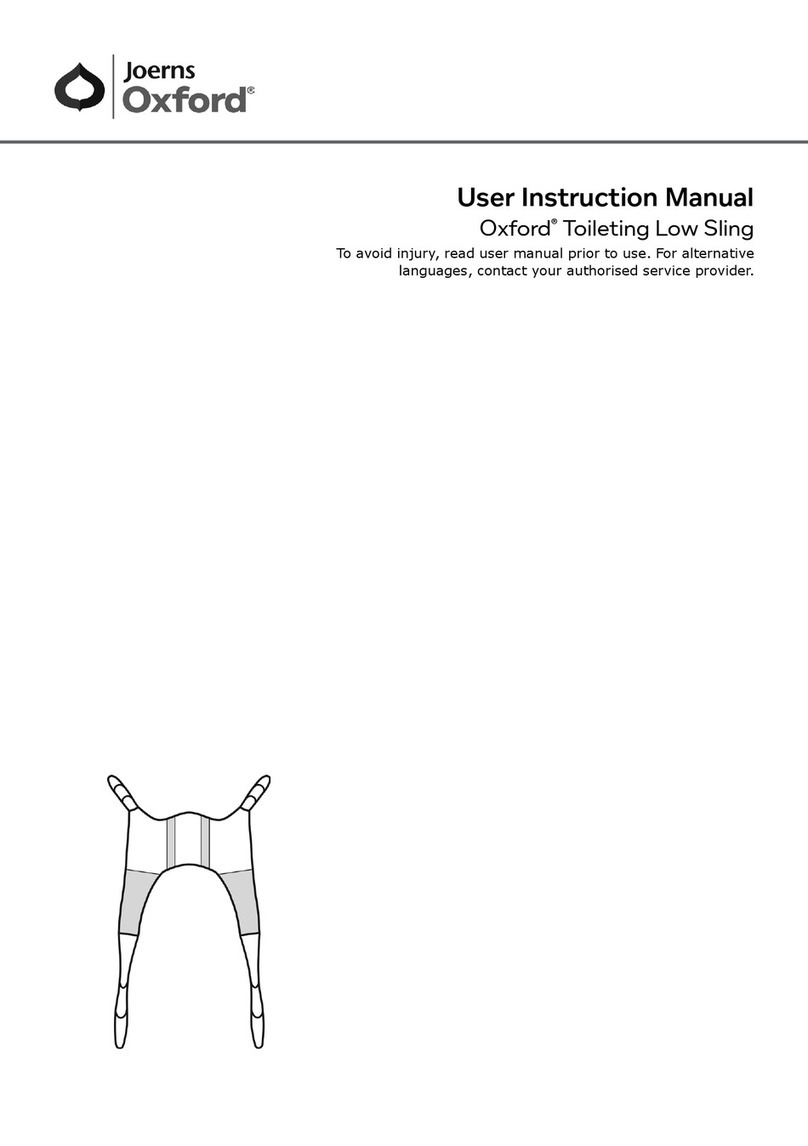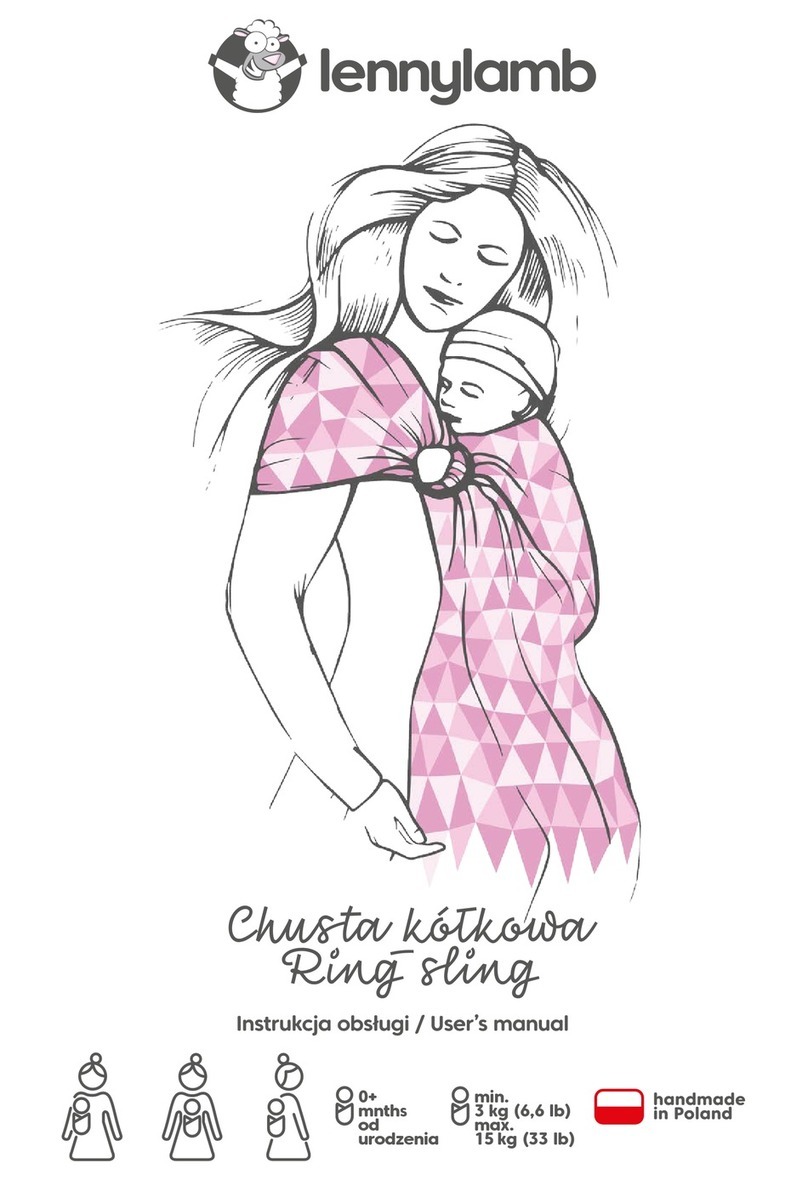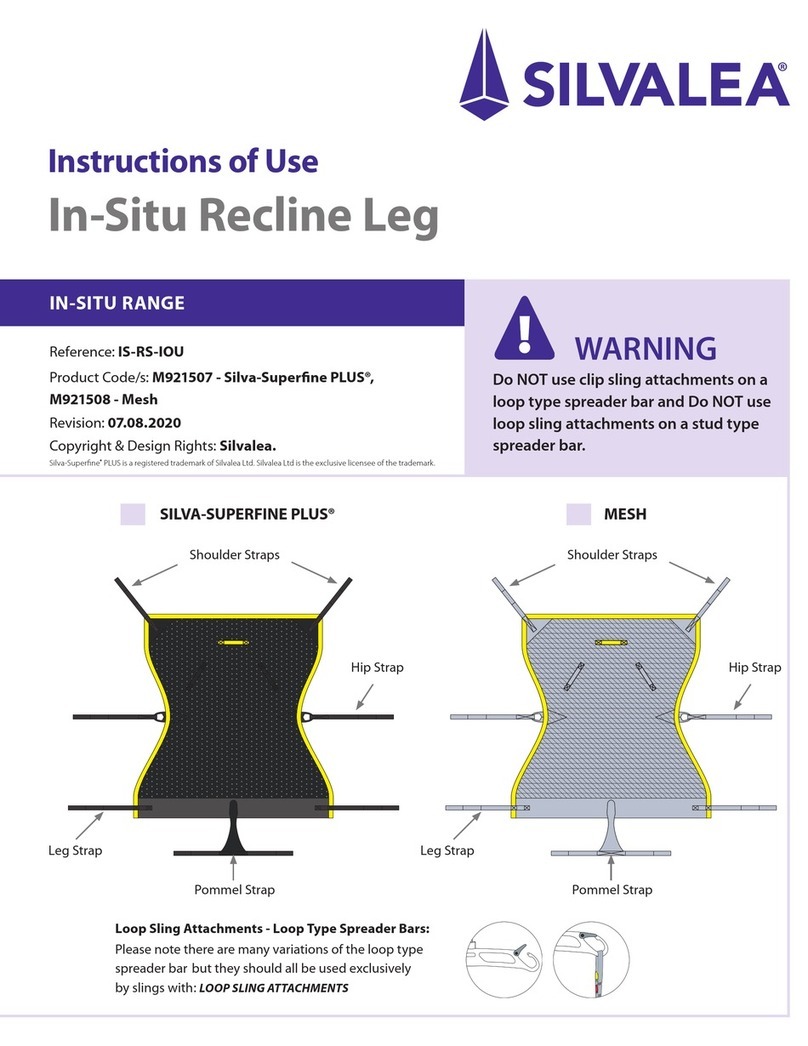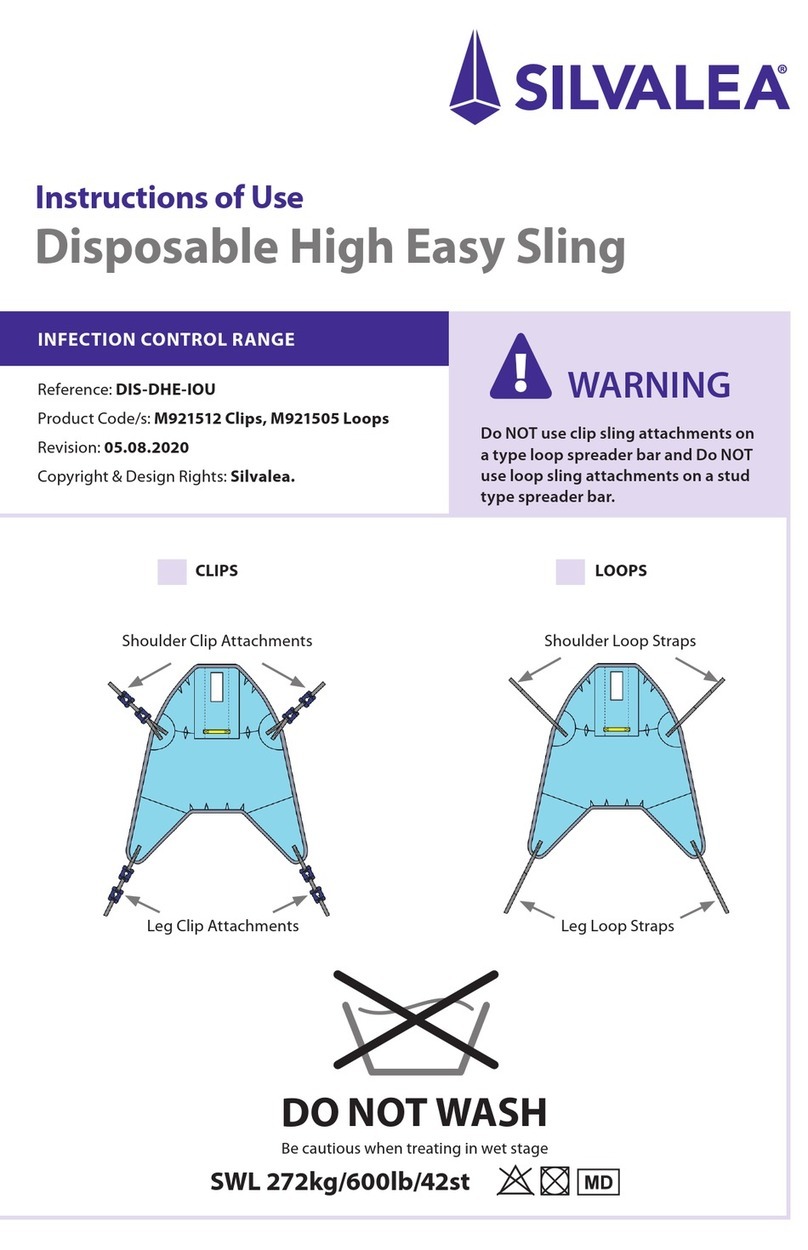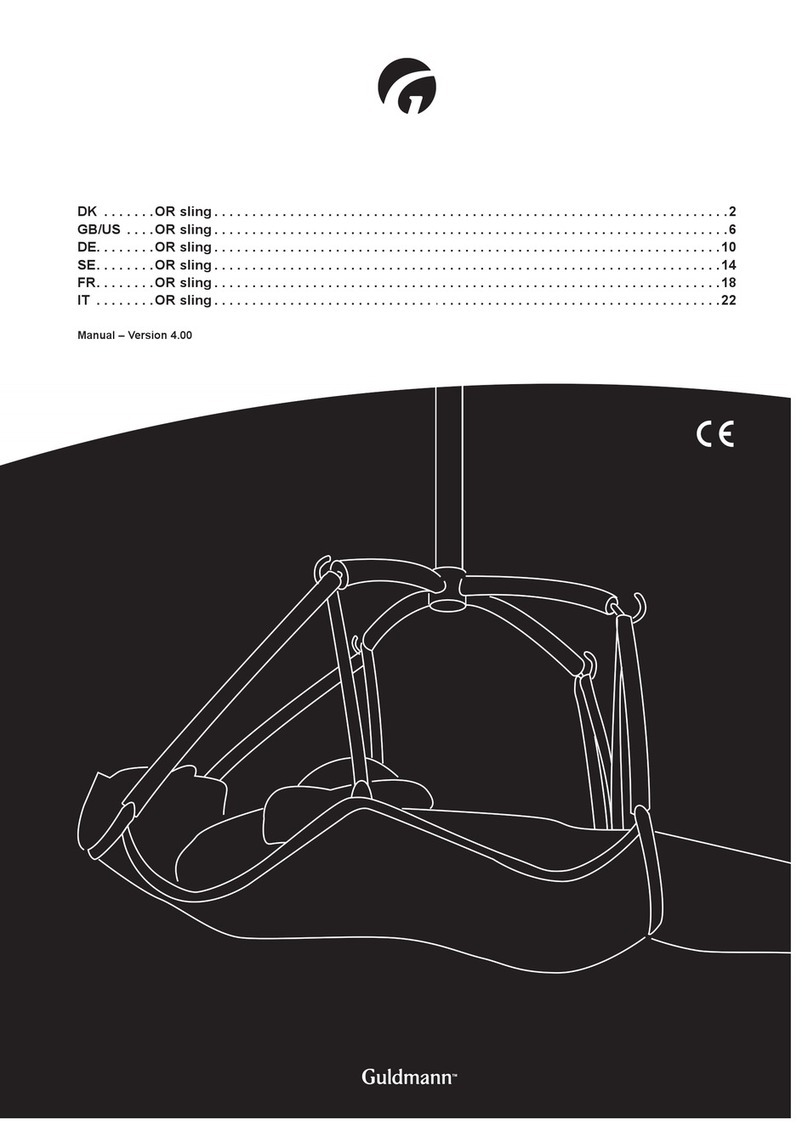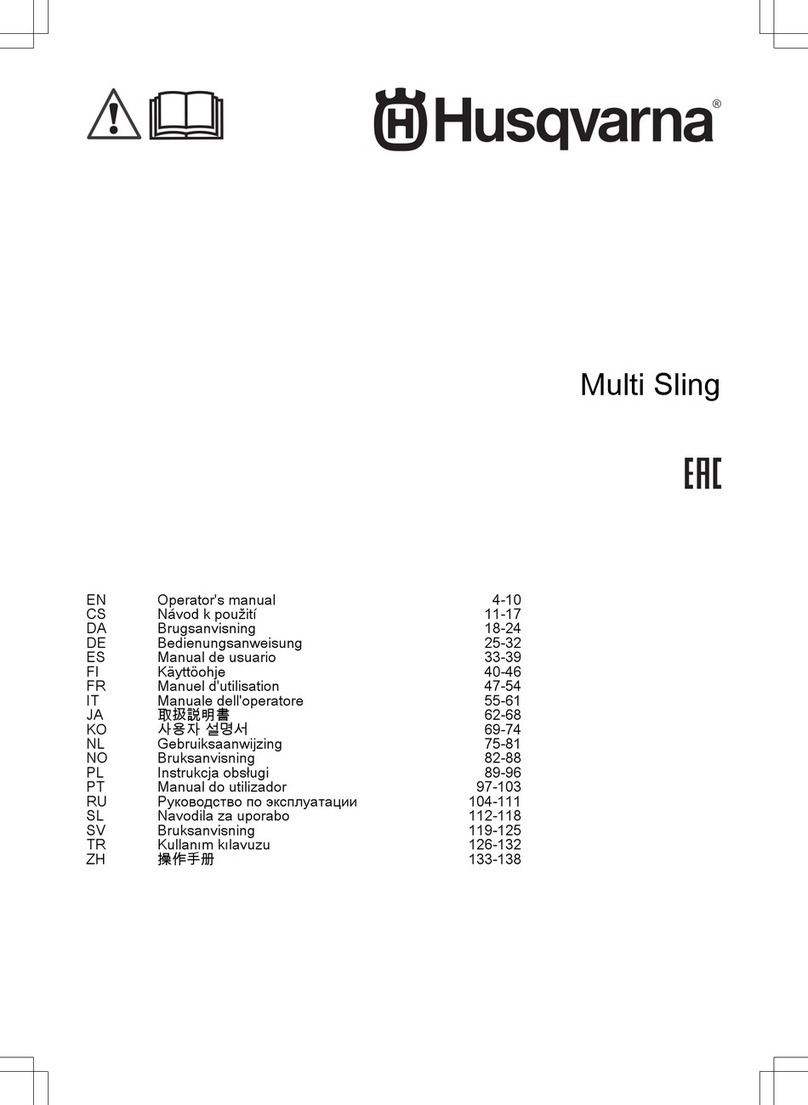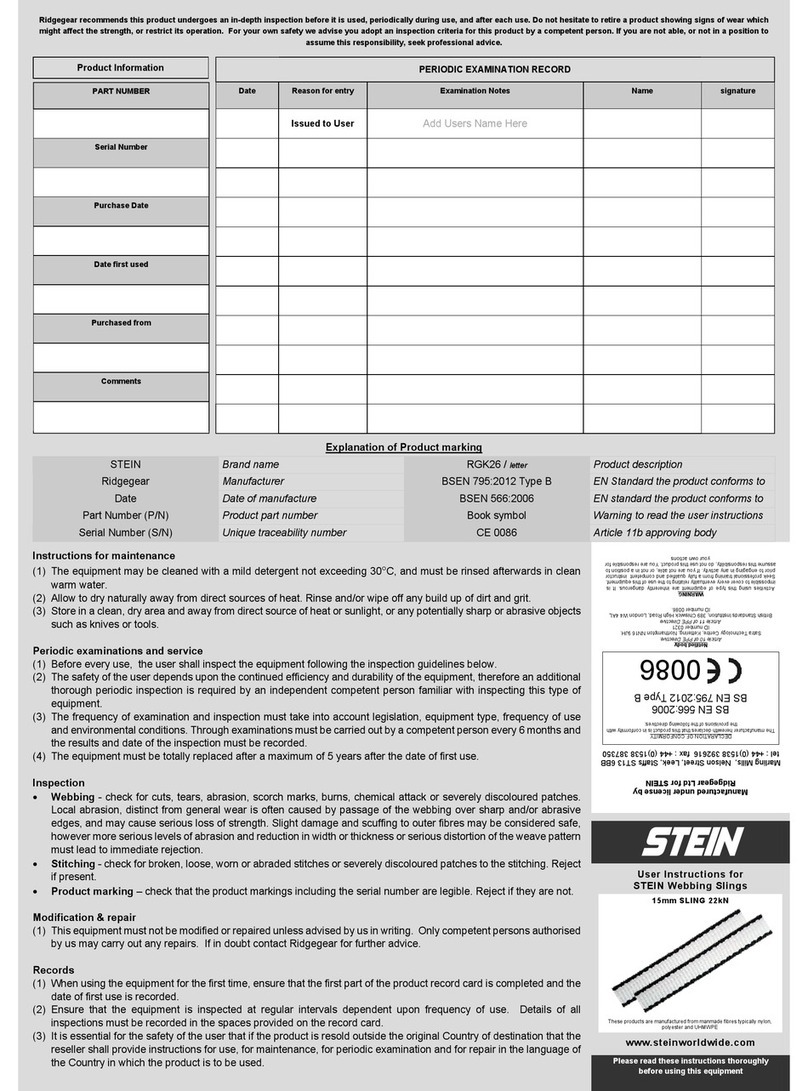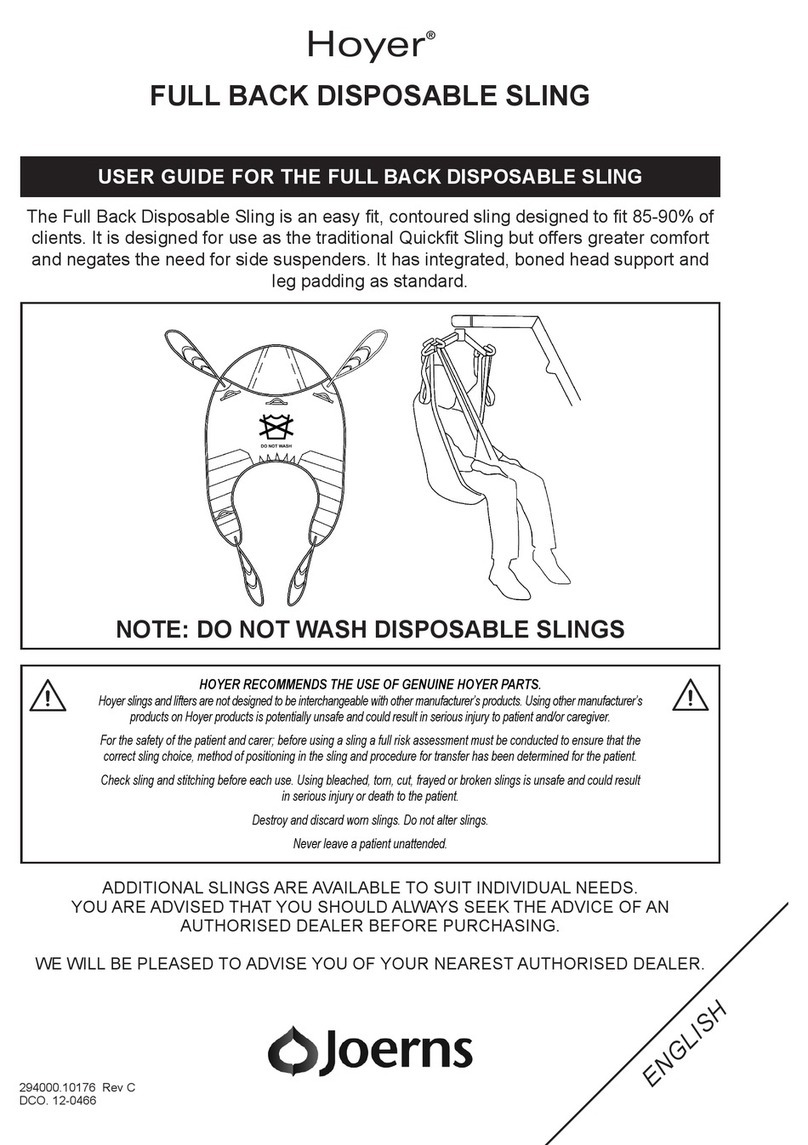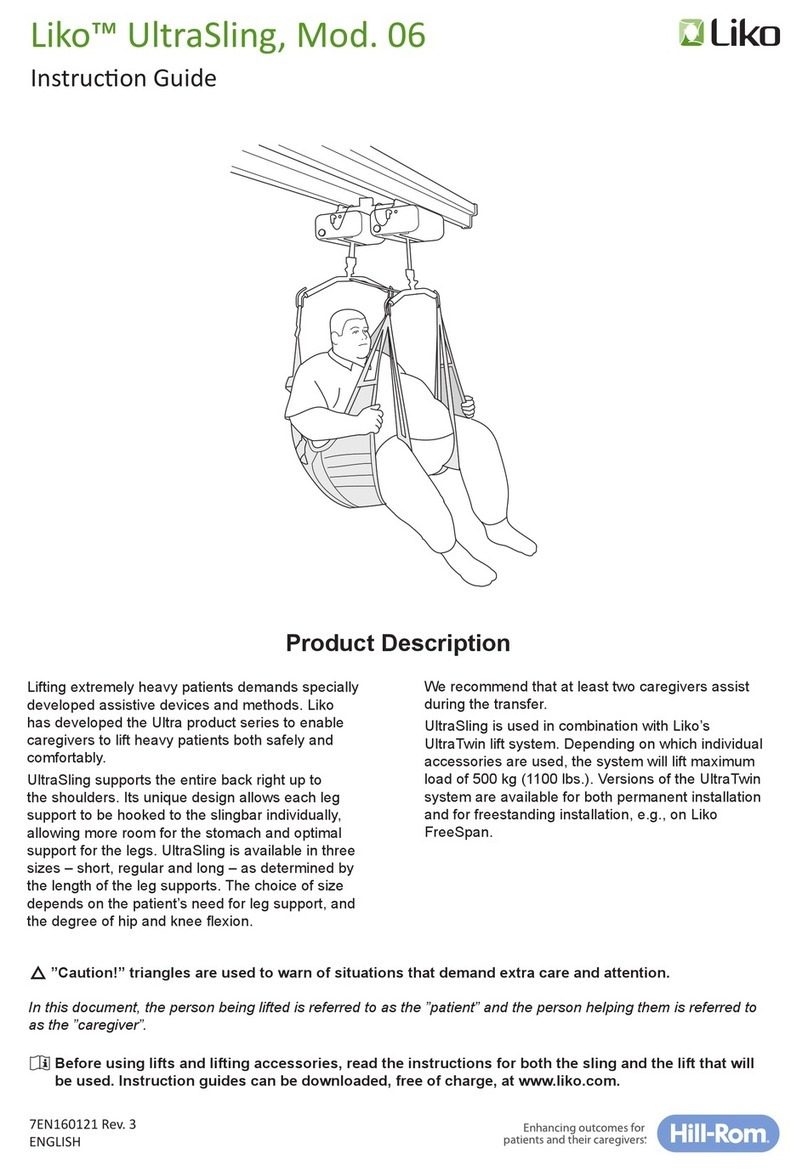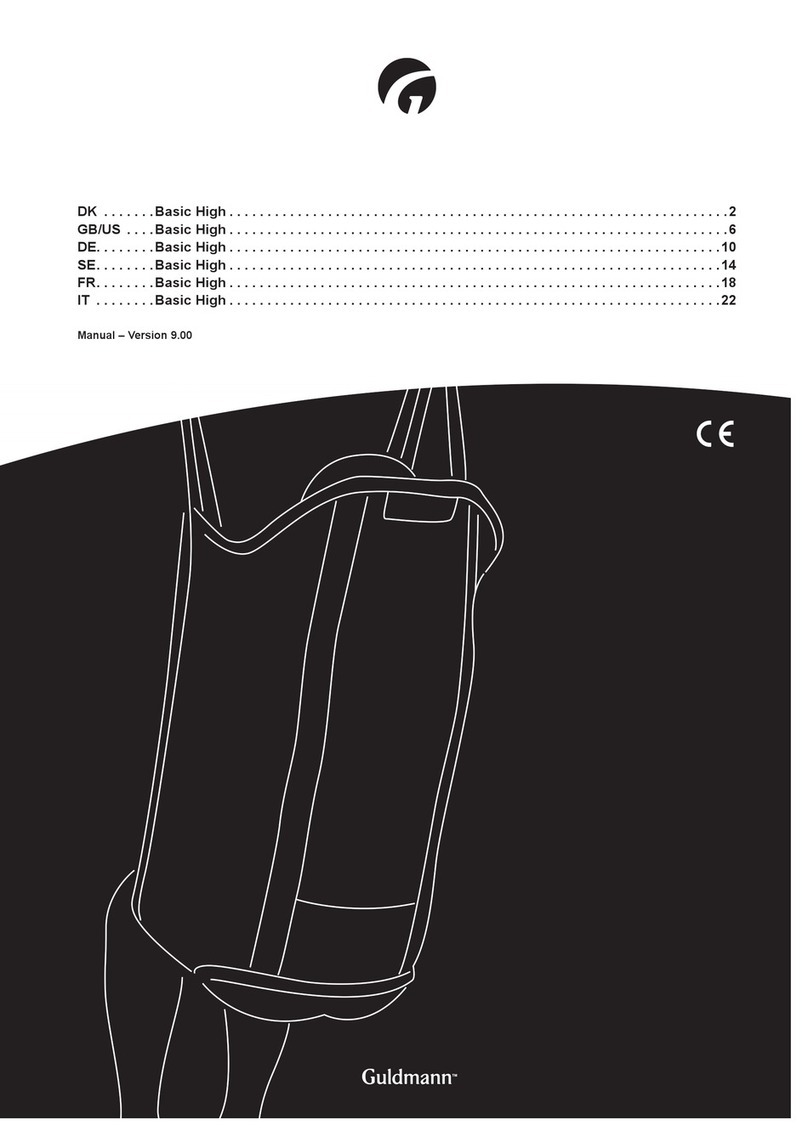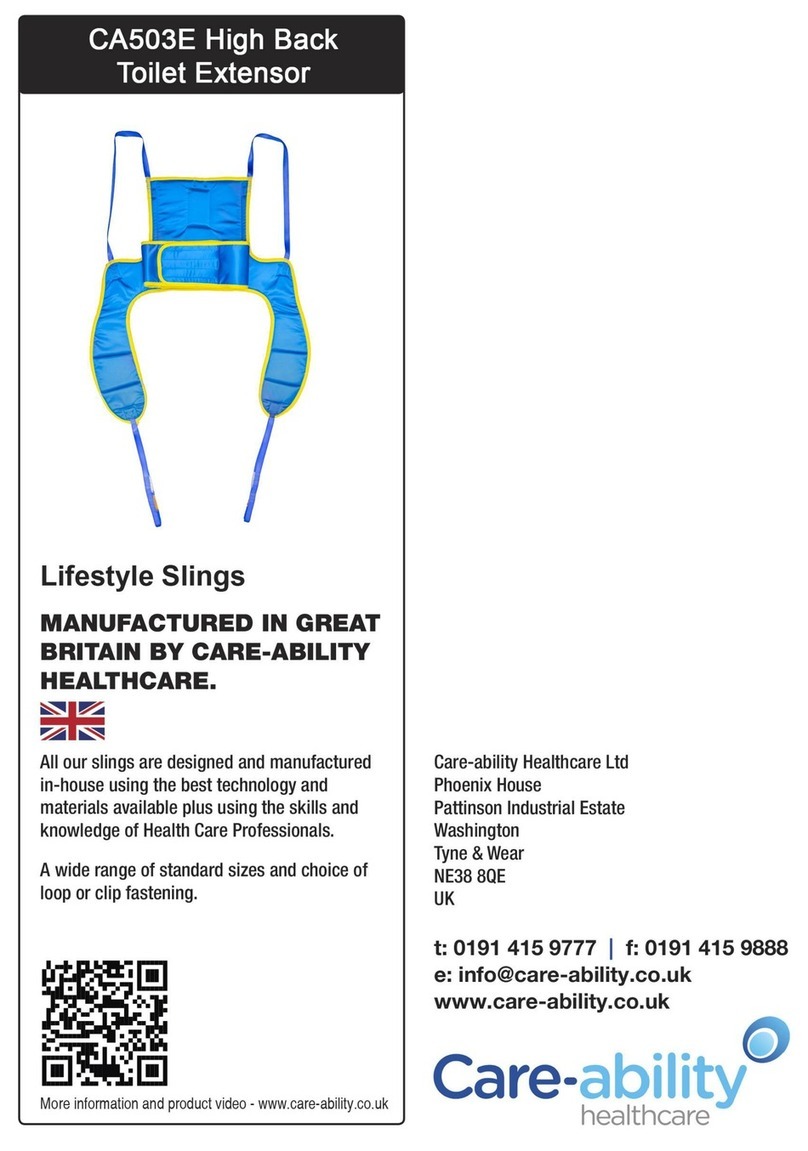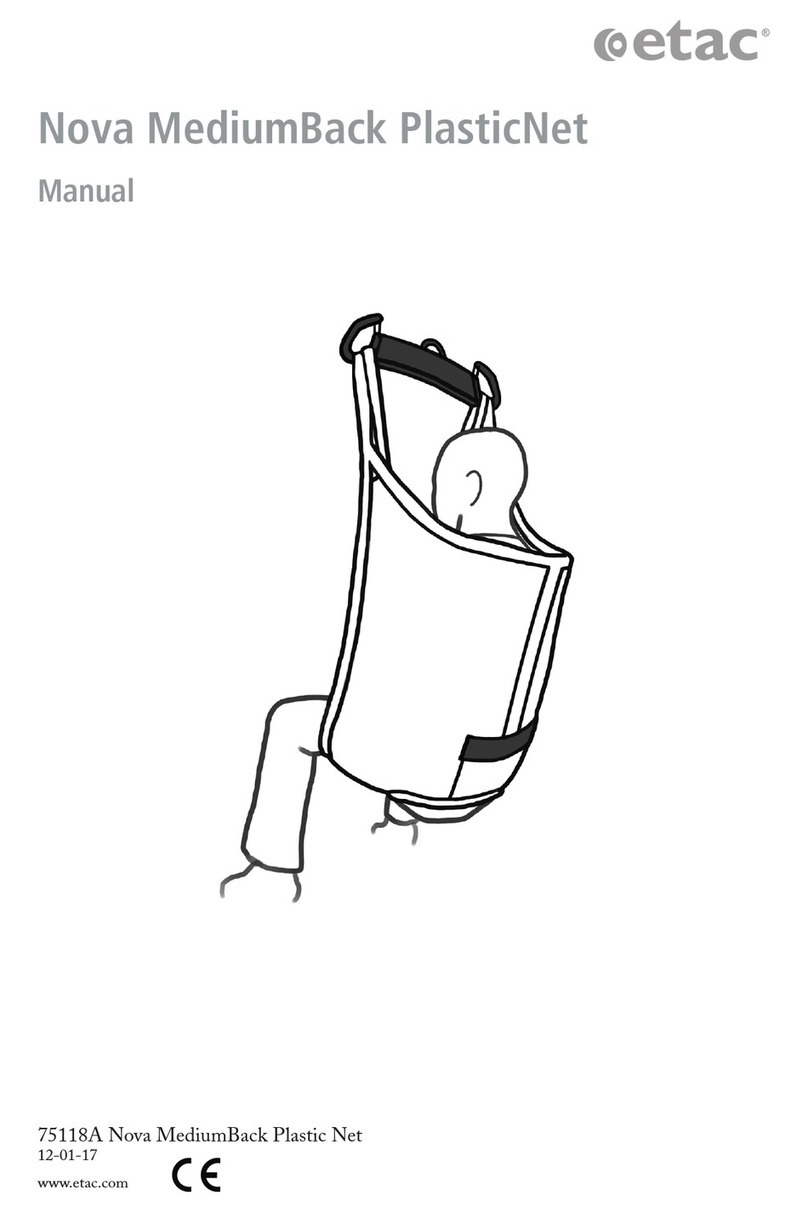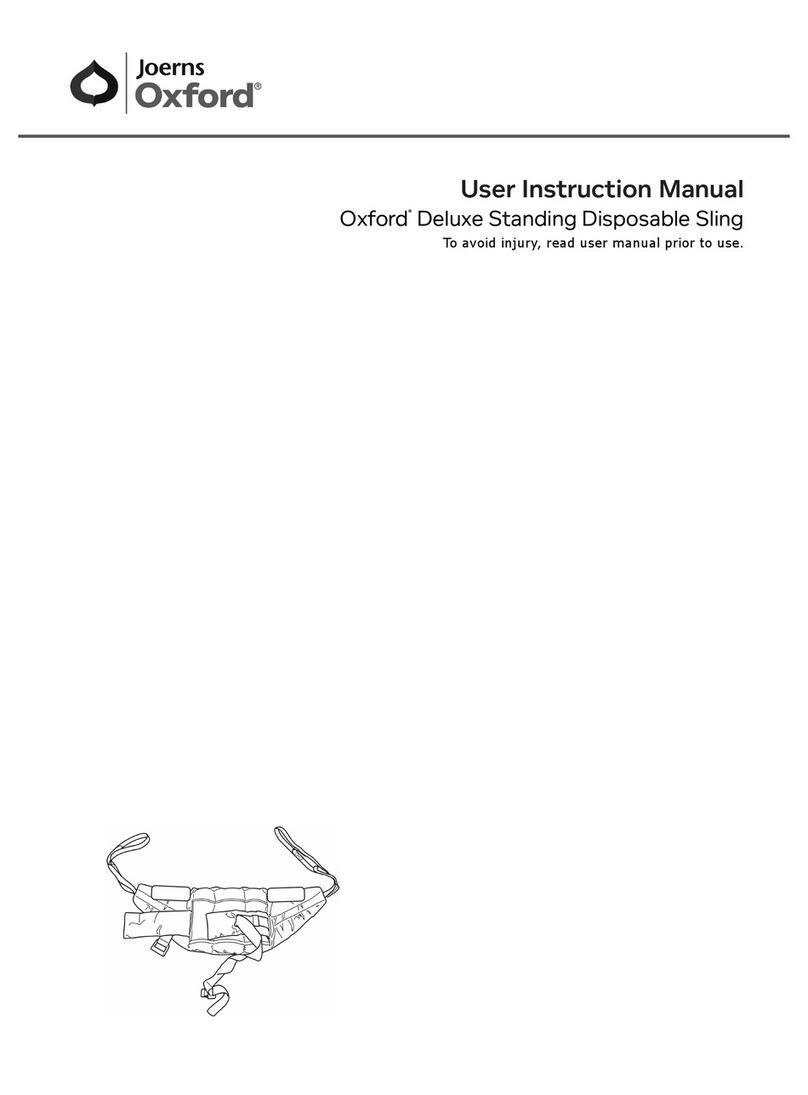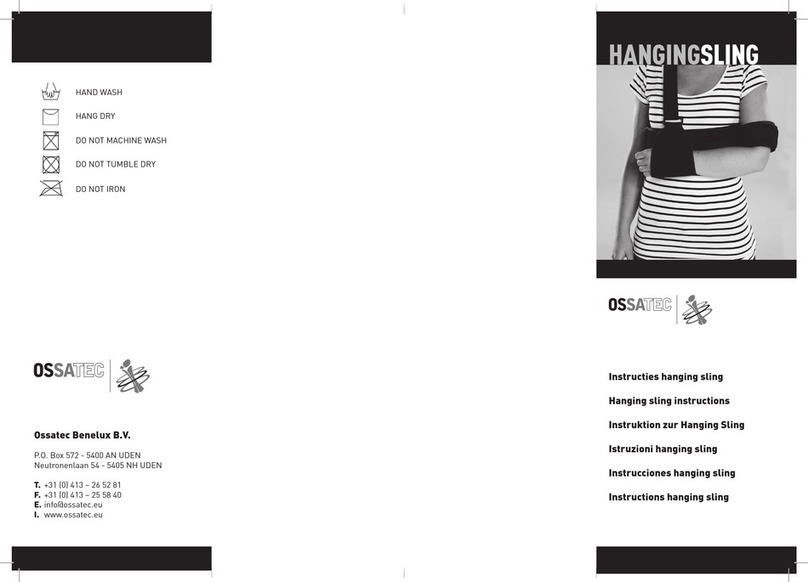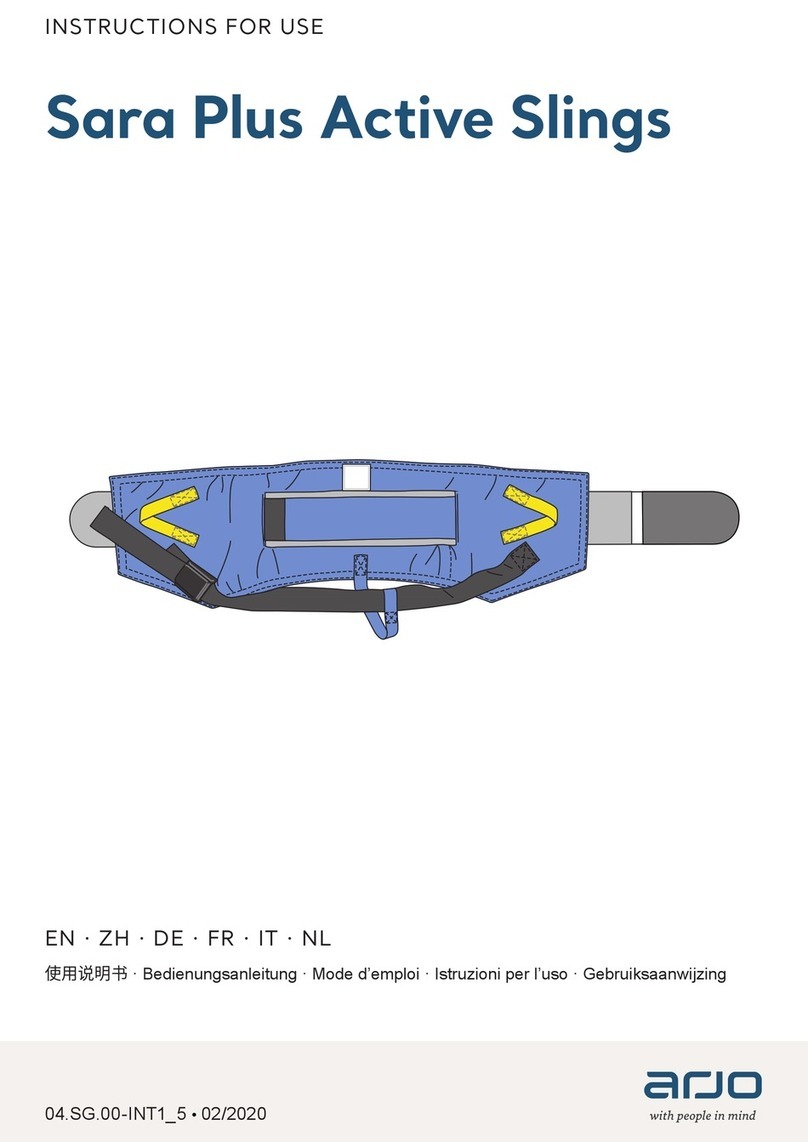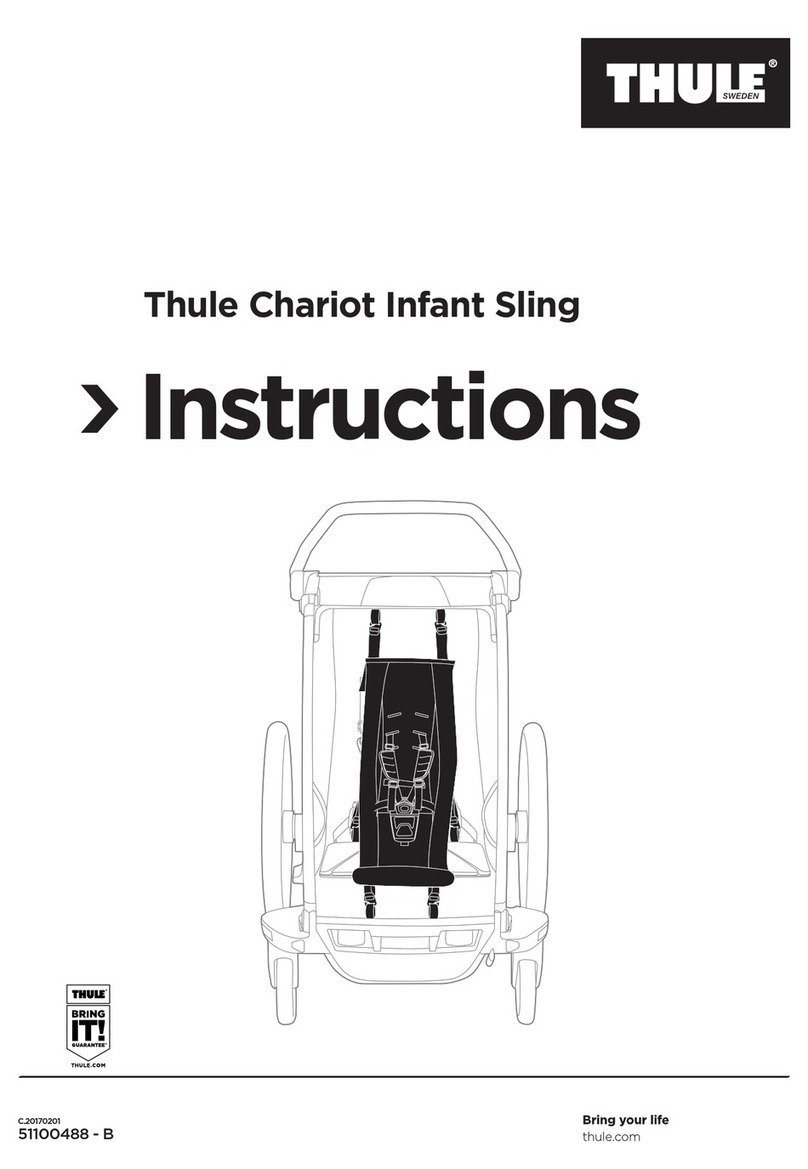
Oxford
Slings
Full Back Sling (Spreader Bar: 6 Point)
This is a more specialised sling. It incorporates integral boned head support
and padded leg pieces and is available in sizes XS to XL. The correct size will
t snuggly and give full protection for patients who go into extension or have
involuntary movements or behavioural problems.
FIM Scores: 1 and 2 and any other person from the oor
Comfort Sling (Cradle: 4 Point)
This is a more specialised sling. It allows correct positioning to be made via the 4-
point cradle and uses the Securi3 sling connection system ensuring no inadvertent
detachment of the sling from the cradle. It incorporates a removable comfort pad for
head support and ts snuggly to give full protection for patients who go into extension
or have involuntary movements or behavioural problems. It is available in all sizes
from XS to XL.
FIM Scores: 1 and 2 and any other person from the oor
5
Standing Harness (Spreader Bar: 6 Point)
The Standing Harness is a versatile sling with a wide range of uses. This includes
assisting with standing and walking or visiting the toilet. The Standing Harness
supports the patient around the upper body as well as under the arms. The
Standing Harness is not a general-purpose sling and requires the patient to be
able to partially weight bear.
FIM Scores: 2 or 3 following careful assessment
Silkfit Sling (Spreader Bar: 6 Point)
The Silkt Sling is a exible contoured, easy to t sling designed to t 85-90% of clients.
This sling is especially suited to patients in moulded type wheelchair systems where
tting of the sling can prove difcult. It has integrated, boned head support and leg
padding as standard. Available in four sizes - paediatric, small, medium and large.
FIM Scores: 1 and 2 and any other person from the oor
